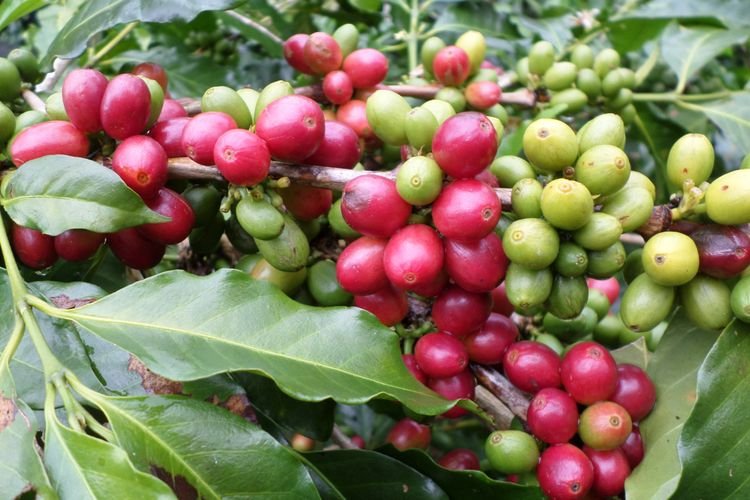
Gayo Coffee is one of Unique Coffee Selections Excluding Robusta and Arabica
Unique Coffee Selections Excluding Robusta and Arabica. Aceh, which is at the northernmost point of Sumatra's island, has a lot of unique things, like its culture, customs, typical food, beautiful natural landscapes, and other unique things.Gayo coffee is one of unique coffee selections excluding Robusta and Arabica
In addition, Aceh is well-known as one of the largest centers for the production of Arabica coffee—not only in Indonesia but also in Asia Because of its world-class coffee.
The espresso is otherwise called "Gayo" espresso in view of its particular fragrance and taste. Gayo espresso is an Arabica espresso assortment which is one of the main wares beginning from the Gayo High countries, Focal Aceh, Indonesia. Manors in Gayo, Focal Aceh are on normal at a height of 1,000 to 1,200 meters above ocean level.
The area is around the city of Takengon and near Lake Tawar. The Gayo people make up the majority of the tribes in this region. In this region, plantations are managed by individuals, and plants are grown in shade (shade-grown coffee). The seeds delivered are Arabica seeds which are appropriate for establishing here.
Flavor of Gayo Arabica Coffee Characteristics
Gayo coffee is very popular, especially in the United States and Europe, due to its strong flavor, low acidity, and hint of spice. Its spotless person makes it sell well as a house mix. Gayo Arabica Coffee has a tendency to have a taste that is inconsistent.
This happens in light of the fact that espresso ranches in the Gayo Good countries region have various levels and different development strategies. Assuming espresso is established in various regions, at various levels, and with different assortments, it is conceivable that the actual quality qualities and taste will likewise be unique.
It is one of one of unique coffee selections excluding Robusta and Arabica. Click here for more information https://www.sejacoffee.com/.
Processing Of Coffee Gayo
Overall and in view of how it functions, there are two methods for handling wet espresso cherries into rice espresso. Rice espresso comes from wet espresso cherries that have gone through a few degrees of handling.
There are two methods for handling espresso cherries, including wet handling and dry handling. Wet handling of espresso cherries is typically called WIB (West Indische Bereiding), while dry handling is generally called OIB (Ost Indische Bereiding).
The main difference between the two processes is that the wet process peels the fruit flesh while the coffee beans are still wet, whereas the dry process strips the fruit flesh, horn skin, and epidermis after the coffee beans have dried (coffee logs). Dry Handling Strategy This straightforward method is utilized frequently for robusta coffee and 90 percent of Brazil's Arabica coffee.
The espresso organic product that has been collected is quickly dried, particularly the ready natural product. Drying espresso cherries should be possible in two ways, to be specific:
-
Normal Drying Counterfeit
-
Drying Wet Handling
Strategy is Receiving, pulping, fermentation, washing, drying, final processing, preservation, and storage are all examples of wet processing procedures.
1. Acceptance
To avoid direct heating, which can result in damage such as a change in the fruit's color or rotting of coffee cherries, the harvest must be moved as quickly as possible to the processing area.
2. Pulping
Pulping means to isolate espresso from the external shell and mesocarp (tissue part), bringing about mash. The process involves releasing the coffee fruit's exocarp and mesocarp under running water. This is the basic principle. Various varieties of dry green coffee will result from this procedure.
3. Fermentation
The slimy fruit flesh (mucilage), which is still attached to the horn skin, is the goal of the fermentation process. During the washing process, it will easily separate, making the drying process simpler.
4. Washing
The coffee cherries are manually washed in the washing tank after being supplied with water through a channel in the fermentation tank and immediately stirred.
5. Drying
The water content of wet parchment coffee is reduced from 60% to 53% during preliminary drying. As another option, espresso can be dried in the sun for 2 or 3 days and mixed often. Water content can reach 45%. Drying of Material espresso proceeds, did in daylight until the water content scopes 11%, which at last keeps up with capacity soundness.
6. Last Interaction
The following system is the last cleaning process which plans to keep up with its appearance so it is great for trade or going back over. The following are the stages of this final cleaning procedure.
-
Protection and capacity
Espresso berries can be put away as dried espresso berries or dry material espresso berries which require a similar stockpiling conditions. KA coffee beans contain 11% water and an air RH of no more than 74%.
Do you interested to taste one of unique coffee selections excluding Robusta and Arabica ?
Releted Post

Robusta Coffee Import Criteria Indonesia
Espresso is a natural substance for reviving beverages that have been famous with individuals ...

Arabica Coffee Import Criteria Indonesia with SNI
The ascent of bistros right now present in Indonesia shows that espresso drinks are ...






